-
ARTÍCULO DE REVISIÓN
Telenursing in the postoperative period: a scoping review
Revista Brasileira de Enfermagem. 2024;77(3):e20240066
29/07/2024
Resumo
ARTÍCULO DE REVISIÓNTelenursing in the postoperative period: a scoping review
Revista Brasileira de Enfermagem. 2024;77(3):e20240066
29/07/2024DOI 10.1590/0034-7167-2024-0066
Visualizações0Ver maisABSTRACT
Objectives:
to map available evidence on telenursing use in the postoperative period and its impact on patient outcomes.
Methods:
a scoping review, conducted according to the JBI model and the PRISMA-ScR checklist. The search was carried out in the CINAHL, Embase, LILACS, PubMed, Web of Science, SciELO, Scopus and Cochrane Library databases.
Results:
twelve studies were included, published between 2011 and 2023, 66.6% of which were in developed countries. Of the positive outcomes, we highlight improved levels of disability, autonomy and quality of life, lower rates of post-operative complications, pain and reduced costs. Telephone monitoring was the most widely used modality, but there were few studies in the pediatric context and in Brazil.
Conclusions:
of the studies, 11 (91.6%) identified at least one positive outcome in telenursing use and none showed negative aspects in the postoperative period. The role of nurses in digital health needs further study.
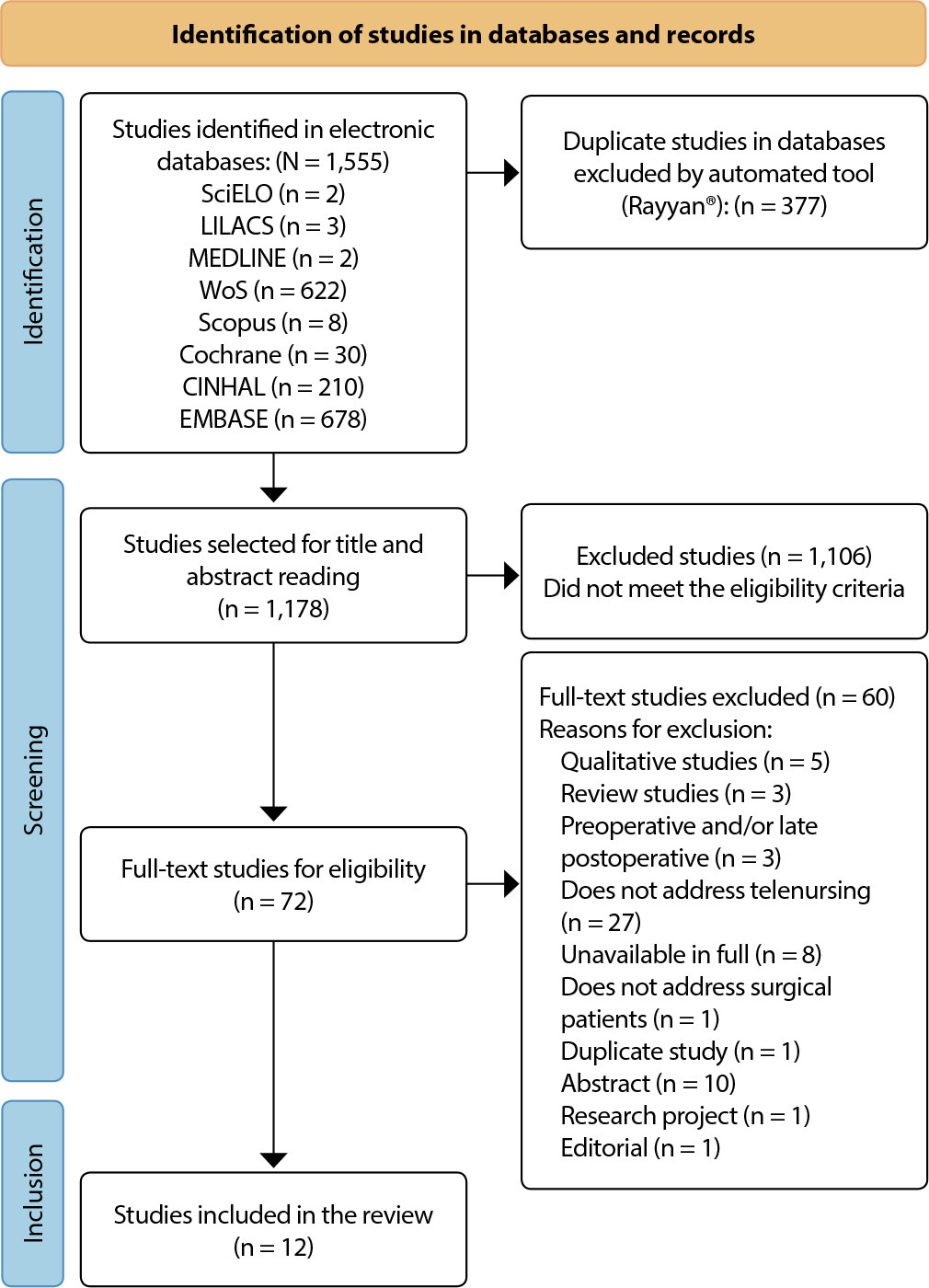
-
ARTÍCULO ORIGINAL
Sexual counseling for people with acute coronary syndrome: educational video development
Revista Brasileira de Enfermagem. 2024;77(3):e20230416
29/07/2024
Resumo
ARTÍCULO ORIGINALSexual counseling for people with acute coronary syndrome: educational video development
Revista Brasileira de Enfermagem. 2024;77(3):e20230416
29/07/2024DOI 10.1590/0034-7167-2023-0416
Visualizações0Ver maisABSTRACT
Objective:
to assess validity evidence of an educational video on safe sexual activity after acute coronary syndrome.
Method:
study in three phases: video development; content validity analysis by 11 experts; and analysis of validity based on response processes by seven people with coronary disease. The content validity ratio (CVR) was calculated with critical values for the second phase of 0.63 and for the third of 1.0.
Results:
the video addressed the importance of resuming sexual activity and positions that consume less energy, clinical warning signs, the importance of adhering to treatment and a welcoming environment for sexual practice. A CVR above the critical value was obtained with a total of 4 minutes and 41 seconds.
Conclusion:
the educational video brings together adequate content validity evidence and can be used as a tool for patients after acute coronary syndrome.
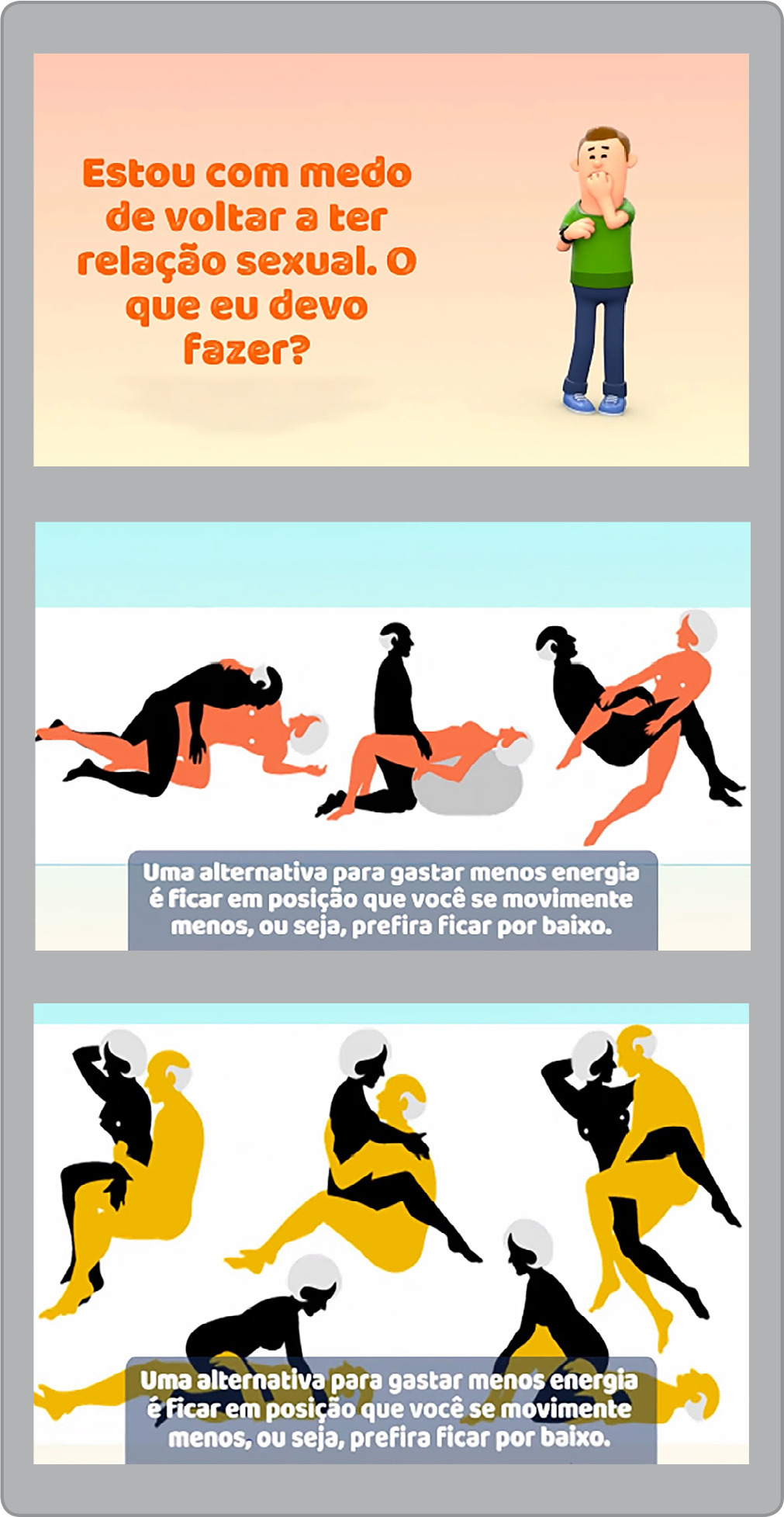
-
ARTÍCULO ORIGINAL
Evaluation of software technical quality for collecting data from patients under palliative care
Revista Brasileira de Enfermagem. 2024;77(3):e20230435
29/07/2024
Resumo
ARTÍCULO ORIGINALEvaluation of software technical quality for collecting data from patients under palliative care
Revista Brasileira de Enfermagem. 2024;77(3):e20230435
29/07/2024DOI 10.1590/0034-7167-2023-0435
Visualizações0ABSTRACT
Objectives:
to evaluate software technical quality for collecting data from patients under palliative care.
Methods:
this is methodological technology evaluation research, according to the technical standard International Organization for Standardization/International Electrotechnical Commission 25040-2011, developed from August 2021 to August 2023. Eight nurses and eight information technology professionals participated as judges, who evaluated six quality characteristics and 23 subcharacteristics. Items that reached a percentage of agreement greater than 70% were considered suitable.
Results:
the characteristics evaluated by nurses/information technology professionals received the following percentages of agreement, respectively: functional suitability (94%-84%); reliability (100-70%); usability (89.9-66.8%); performance efficiency (95.8%-86.1%); compatibility (95.8-79.6%); and safety (96%-83.4%).
Conclusions:
the software was considered suitable in quality evaluation to offer support to nurses in collecting patient data under palliative care, with the potential to operationalize the first Nursing Process stage.
Palavras-chave: BiomedicalData CollectionNursing ProcessPalliative CareSoftwareTechnology AssessmentVer mais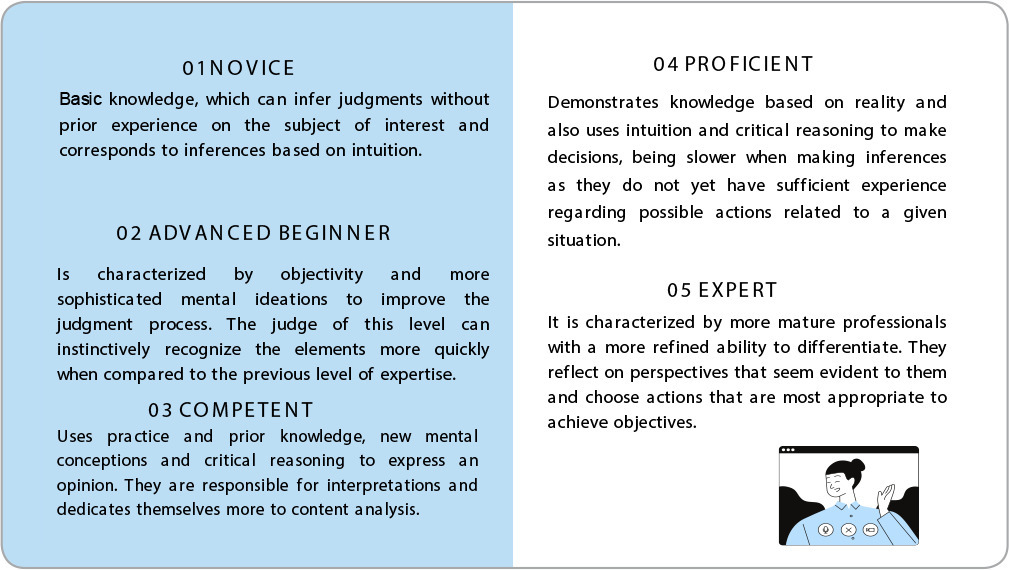
-
ARTÍCULO ORIGINAL
Mental health of parents of children and adolescents who require special health care
Revista Brasileira de Enfermagem. 2024;77(3):e20230457
29/07/2024
Resumo
ARTÍCULO ORIGINALMental health of parents of children and adolescents who require special health care
Revista Brasileira de Enfermagem. 2024;77(3):e20230457
29/07/2024DOI 10.1590/0034-7167-2023-0457
Visualizações0Ver maisABSTRACT
Objective:
To identify the manifestations presented by parents of children and adolescents who require special health attention that can impact their mental health.
Methods:
exploratory, qualitative research, based on the concept of vulnerability, with data collection carried out through interviews with 18 parents of children and adolescents with special health care needs, hospitalized in the pediatric ward of a hospital in Paraná, between May/2017 and May/ 2018. Data analyzed by inductive thematic analysis.
Results:
parents experienced situations of vulnerability when providing care at home, with repercussions on their mental health, expressed by manifestations of lack of protection, anxiety and depression.
Final considerations:
It is important that health professionals seek to expand actions to promote care and reduce situations that generate threats, insecurities, concerns and damage to the health of parents, which can impact and further weaken care for children and adolescents who need attention especially health.
-
ARTÍCULO ORIGINAL
Disrupted mother-fetus dyad risk in high-risk pregnancies: a Middle-Range Theory
Revista Brasileira de Enfermagem. 2024;77(3):e20230464
29/07/2024
Resumo
ARTÍCULO ORIGINALDisrupted mother-fetus dyad risk in high-risk pregnancies: a Middle-Range Theory
Revista Brasileira de Enfermagem. 2024;77(3):e20230464
29/07/2024DOI 10.1590/0034-7167-2023-0464
Visualizações0ABSTRACT
Objectives:
to develop and evaluate a Middle-Range Theory for the nursing diagnosis “Disrupted Mother-Fetus Dyad Risk” in high-risk pregnancies.
Methods:
this methodological study was conducted in two stages: theory development and evaluation. Dorothea Orem’s General Nursing Model was used as the theoretical-conceptual foundation. Evaluation was conducted using the Delphi method with seven judges, and consensus was achieved when the Content Validity Index of the evaluated items was ≥ 0.80.
Results:
the theory identified 20 elements of the nursing diagnosis “Disrupted Mother-Fetus Dyad Risk” (10 risk factors, 4 at-risk populations, and 6 associated conditions), 14 propositions, and 1 pictogram. After two rounds of evaluation, the theory was considered consistent, with consensus reached for all items, each achieving a Content Validity Index ≥ 0.80.
Conclusions:
the Middle-Range Theory included biopsychosocial factors explaining the nursing phenomenon “Disrupted Mother-Fetus Dyad Risk,” which aids in nurses’ diagnostic reasoning.
Palavras-chave: High-RiskMaternal-Fetal RelationsNursing DiagnosisNursing ProcessNursing TheoryPregnancyVer mais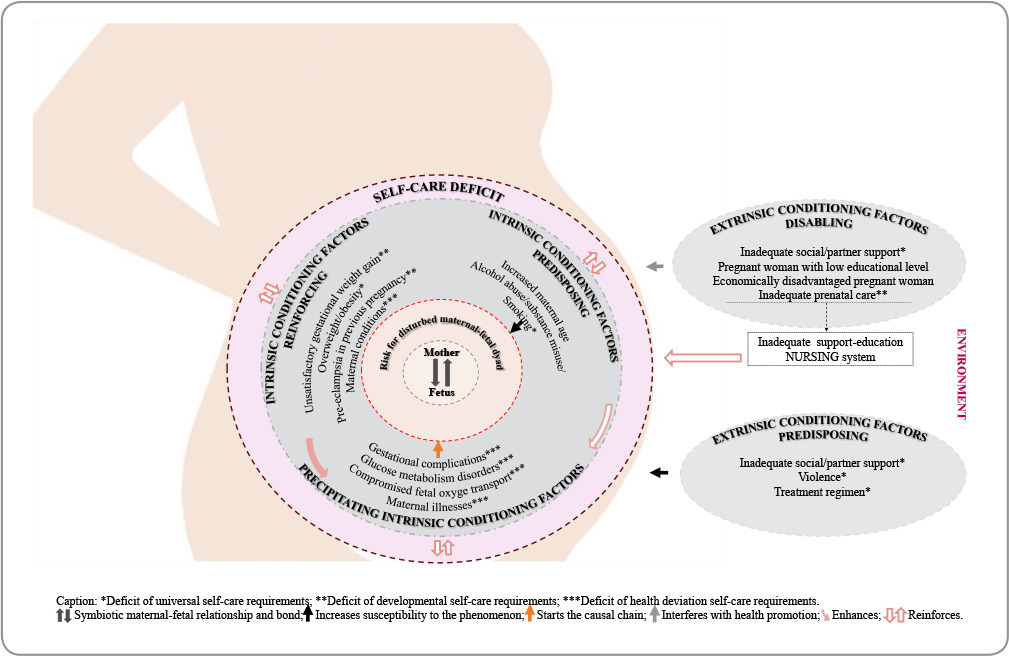
-
ARTÍCULO ORIGINAL
Completeness of variables in Hospital-Based Cancer Registries for prostatic malignant neoplasm
Revista Brasileira de Enfermagem. 2024;77(3):e20230467
29/07/2024
Resumo
ARTÍCULO ORIGINALCompleteness of variables in Hospital-Based Cancer Registries for prostatic malignant neoplasm
Revista Brasileira de Enfermagem. 2024;77(3):e20230467
29/07/2024DOI 10.1590/0034-7167-2023-0467
Visualizações0ABSTRACT
Objectives:
to analyze the completeness of variables from Hospital-Based Cancer Registries of cases of prostate neoplasm in the Oncology Care Network of a Brazilian state between 2000 and 2020.
Methods:
an ecological time series study, based on secondary data on prostate cancer Hospital-Based Cancer Registries prostate. Data incompleteness was classified as excellent (<5%), good (between 5%-10%), fair (10%-20%), poor (20%-50%) and very poor (>50%), according to the percentage of lack of information.
Results:
there were 13,519 cases of prostate cancer in the Hospital-Based Cancer Registries analyzed. The variables “family history of cancer” (p<0.001), “alcoholism” (p<0.001), “smoking” (p<0.001), “TNM staging” (p<0.001) had a decreasing trend, while “clinical start of treatment” (p<0.001), “origin” (p=0.008) and “occupation” (p<0.001) indicated an increasing trend.
Conclusions:
most Hospital-Based Cancer Registries variables showed excellent completeness, but important variables had high percentages of incompleteness, such as TNM and clinical staging, in addition to alcoholism and smoking.
Palavras-chave: EpidemiologyHospital RecordsMedical OncologyProstatic NeoplasmsPublic Health SurveillanceVer mais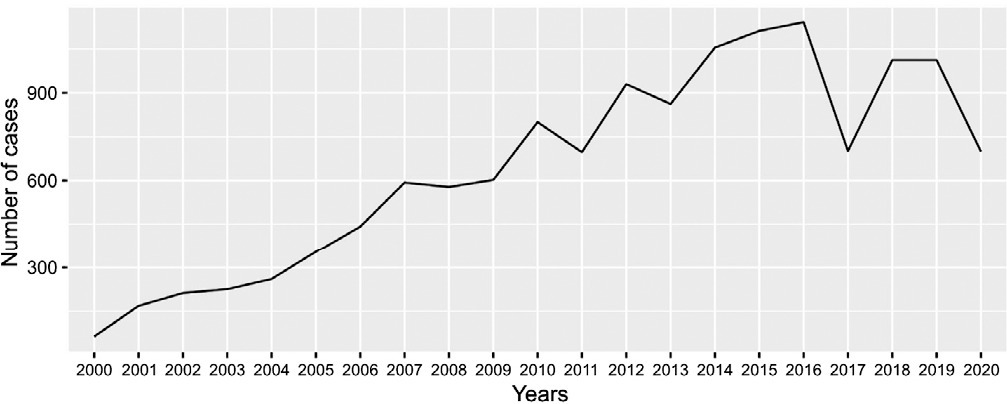
-
ARTÍCULO ORIGINAL
Contribution of informal caregivers to self-care in individuals with heart failure
Revista Brasileira de Enfermagem. 2024;77(3):e20230492
29/07/2024
Resumo
ARTÍCULO ORIGINALContribution of informal caregivers to self-care in individuals with heart failure
Revista Brasileira de Enfermagem. 2024;77(3):e20230492
29/07/2024DOI 10.1590/0034-7167-2023-0492
Visualizações0Ver maisABSTRACT
Objectives:
to evaluate the contribution of informal caregivers to the self-care of individuals with heart failure.
Methods:
a cross-sectional study was conducted with 87 caregivers from March to October 2022 in the city of João Pessoa/PB. The caregivers’ contribution was assessed using the Caregiver Contribution to Self-Care of Heart Failure Index instrument. Scores ≥ 70 points indicate adequate contribution. Data were analyzed using descriptive statistics and Spearman’s correlation.
Results:
the sample consisted of 81.6% female caregivers. Median scores obtained for the self-care contribution scales were: 63.3 for maintenance; 55.5 for management; and 66.6 for confidence. Caregivers never or rarely recommended monitoring body weight, regular physical exercise, extra use of diuretics, and fluid restriction.
Conclusions:
informal caregivers showed inadequate contribution in the areas of maintenance, management, and confidence in self-care of individuals with heart failure.
-
ARTÍCULO DE REVISIÓN
Profile of scientific production on nursing technology construction, validity and application: a bibliometric study
Revista Brasileira de Enfermagem. 2024;77(3):e20230452
29/07/2024
Resumo
ARTÍCULO DE REVISIÓNProfile of scientific production on nursing technology construction, validity and application: a bibliometric study
Revista Brasileira de Enfermagem. 2024;77(3):e20230452
29/07/2024DOI 10.1590/0034-7167-2023-0452
Visualizações0ABSTRACT
Objective:
to analyze the profile of scientific production on nursing technology construction, validity and application.
Methods:
this is a bibliometric study, carried out in six databases, based on the Methodi Ordinatio application, arranged in nine stages. To represent the findings, the VOSviewer® software was used.
Results:
346 studies were identified, obtained from BDENF, CINAHL, EMBASE, LILACS, PubMed/MEDLINE, Scopus and Web of Science. There was a predominance of the English language, and 20% of the authors hold more than 25% of studies. Only two journals account for 25% of studies in the period studied. Twenty-six studies were selected for the InOrdinatio classification. Nursing Process (23%) stood out among the studies. The most produced technology was software (27%), and 50% of works describe construction and validity.
Conclusions:
there is an emphasis on the creation of educational technologies, especially information technology. The data demonstrates opportunities for future research in the area.
Palavras-chave: Bibliometric AnalysesEducational TechnologyNursingNursing Methodology ResearchTechnologyVer mais
-
ARTÍCULO ORIGINAL
Fatores associados ao bem-estar materno em situação de parto de puérperas em Minas Gerais
Revista Brasileira de Enfermagem. 2024;77(6):e20230304
16/12/2024
Resumo
ARTÍCULO ORIGINALFatores associados ao bem-estar materno em situação de parto de puérperas em Minas Gerais
Revista Brasileira de Enfermagem. 2024;77(6):e20230304
16/12/2024DOI 10.1590/0034-7167-2023-0304pt
Visualizações1RESUMO
Objetivos:
analisar os fatores associados ao bem-estar materno em situação de parto de puérperas em Minas Gerais.
Métodos:
estudo transversal, aninhado a uma coorte, realizado com puérperas em um município mineiro. Foi adotada a escala Bem-Estar Materno em Situação de Parto 2. Estimaram-se as prevalências do bem-estar materno em situação de parto. A magnitude da associação entre mal-estar materno e práticas assistenciais foi estimada pela Razão de Prevalência (RP), utilizando-se a regressão de Poisson.
Resultados:
participaram 183 puérperas com idade entre 15 e 46 anos, sendo que 26,2%, 27,9% e 45,9% relataram, respectivamente, ótimo, adequado e mal-estar na assistência ao parto. O mal-estar materno foi mais prevalente entre puérperas que passaram por parto cesárea (RP = 1,60) e que não receberam informações sobre amamentação (RP = 1,59).
Conclusões:
observou-se elevada prevalência de mal-estar no parto, associada à realização de cesáreas e à falta de informações sobre amamentação.
Palavras-chave: Assistência ao PartoBem-Estar MaternoHumanização da AssistênciaParto ObstétricoPeríodo Pós-PartoVer mais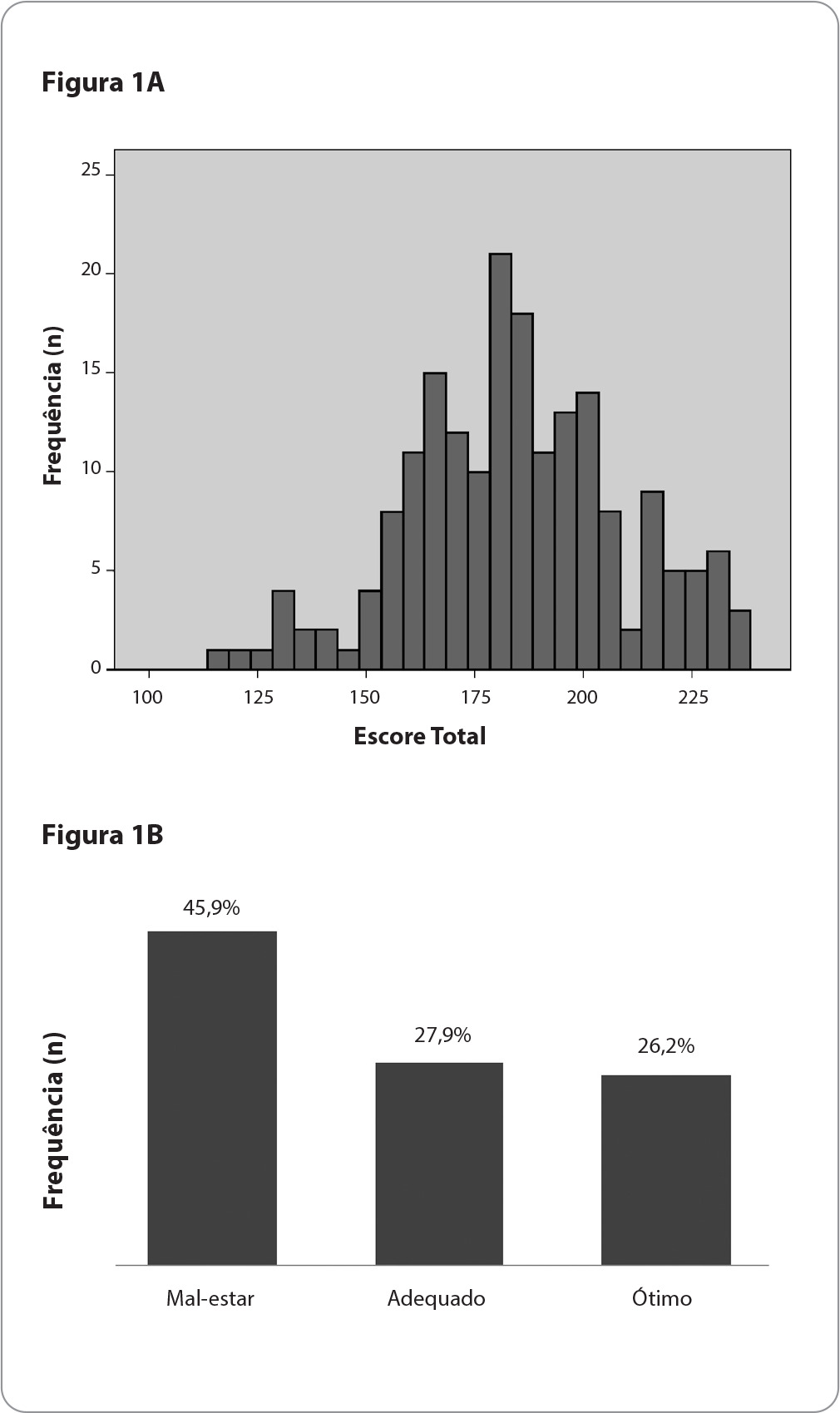
-
ARTÍCULO ORIGINAL
The nursing practice environment and hospital sociotechnical complexity: a mixed-methods study
Revista Brasileira de Enfermagem. 2024;77(6):e20230315
16/12/2024
Resumo
ARTÍCULO ORIGINALThe nursing practice environment and hospital sociotechnical complexity: a mixed-methods study
Revista Brasileira de Enfermagem. 2024;77(6):e20230315
16/12/2024DOI 10.1590/0034-7167-2023-0315
Visualizações1ABSTRACT
Objectives:
to analyze the relationship between the nursing practice environment and hospital sociotechnical complexity as perceived by nurses.
Methods:
a sequential explanatory mixed-methods study was conducted in a hospital in southern Brazil. The Brazilian version of the Practice Environment Scale-Nursing Work Index and the Complexity Characterization Questionnaire were administered to 132 nurses. Subsequently, semi-structured interviews were conducted with 18 participants, and the data were subjected to thematic analysis. Data integration was achieved through a connection approach.
Results:
the nursing practice environment was found to be favorable, except in the subscale concerning Staffing and Resource Adequacy, where complexity was present in the activities. The three emerging categories explained human and technical aspects related to complexity in the practice environment, quality of care, and patient safety. Unexpected variability was inversely correlated with the practice environment.
Conclusions:
the study results indicate a relationship between these constructs, with implications for the quality and the safety of care.
Palavras-chave: Complexity AnalysisHealth Facility EnvironmentNursingPatient SafetyQuality of Health CareVer mais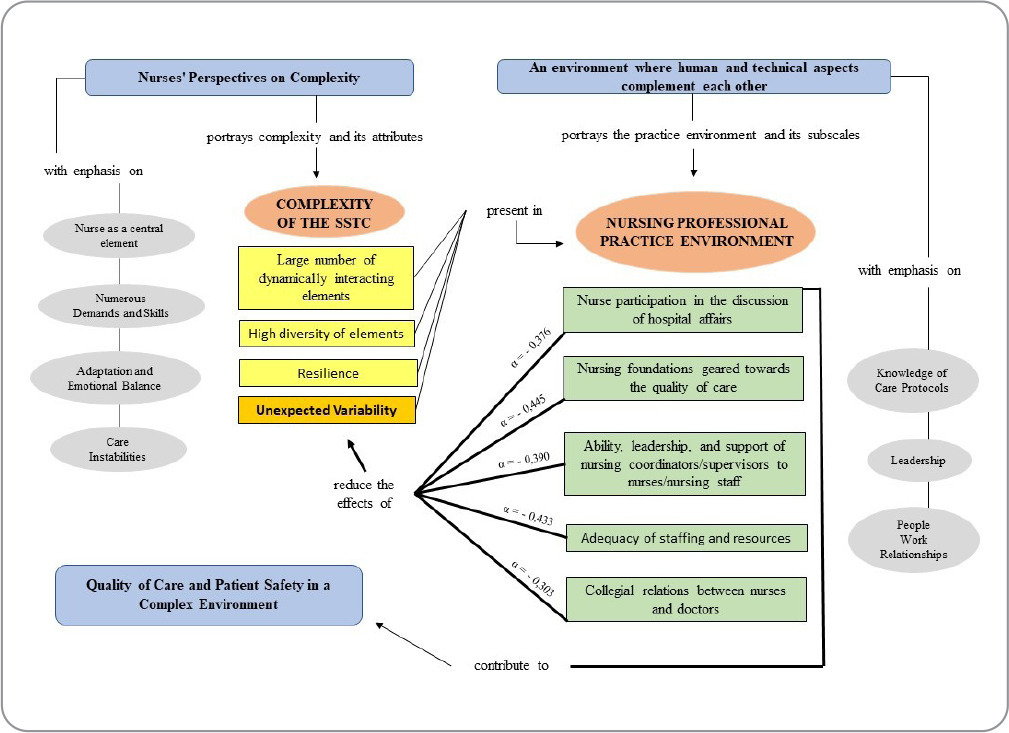
-
ARTÍCULO DE REVISIÓN
Recommendations for guidelines for promoting mental health in the workplace: an umbrella review
Revista Brasileira de Enfermagem. 2024;77(6):e20240086
16/12/2024
Resumo
ARTÍCULO DE REVISIÓNRecommendations for guidelines for promoting mental health in the workplace: an umbrella review
Revista Brasileira de Enfermagem. 2024;77(6):e20240086
16/12/2024DOI 10.1590/0034-7167-2024-0086
Visualizações1Ver maisABSTRACT
Objectives:
to summarize the recommendations of guidelines for promoting mental health in the workplace.
Methods:
an umbrella review, according to Joanna Briggs Institute and Preferred Reporting Items for Systematic reviews and Meta-Analyses methodological assumptions. Data collection was carried out in January 2021 and updated in July 2023 in the American Psychological Association, Cochrane Library, EMBASE, National Library of Medicine, and Scopus databases. Systematic reviews that assessed guidelines with recommendations for mental health care for workers were included. PROSPERO registration CRD42023461845.
Results:
four systematic reviews published between 2015 and 2018 were identified. The abstracts highlighted actions that facilitate and inhibit the recommendations as well as three categories of intervention: primary prevention – worker protection; secondary prevention – promoting workers’ mental health; and tertiary prevention – supporting, monitoring and rehabilitating workers upon returning to work.
Conclusions:
the interventions are based on prevention, promotion and early recognition, support and rehabilitation of mental health problems.
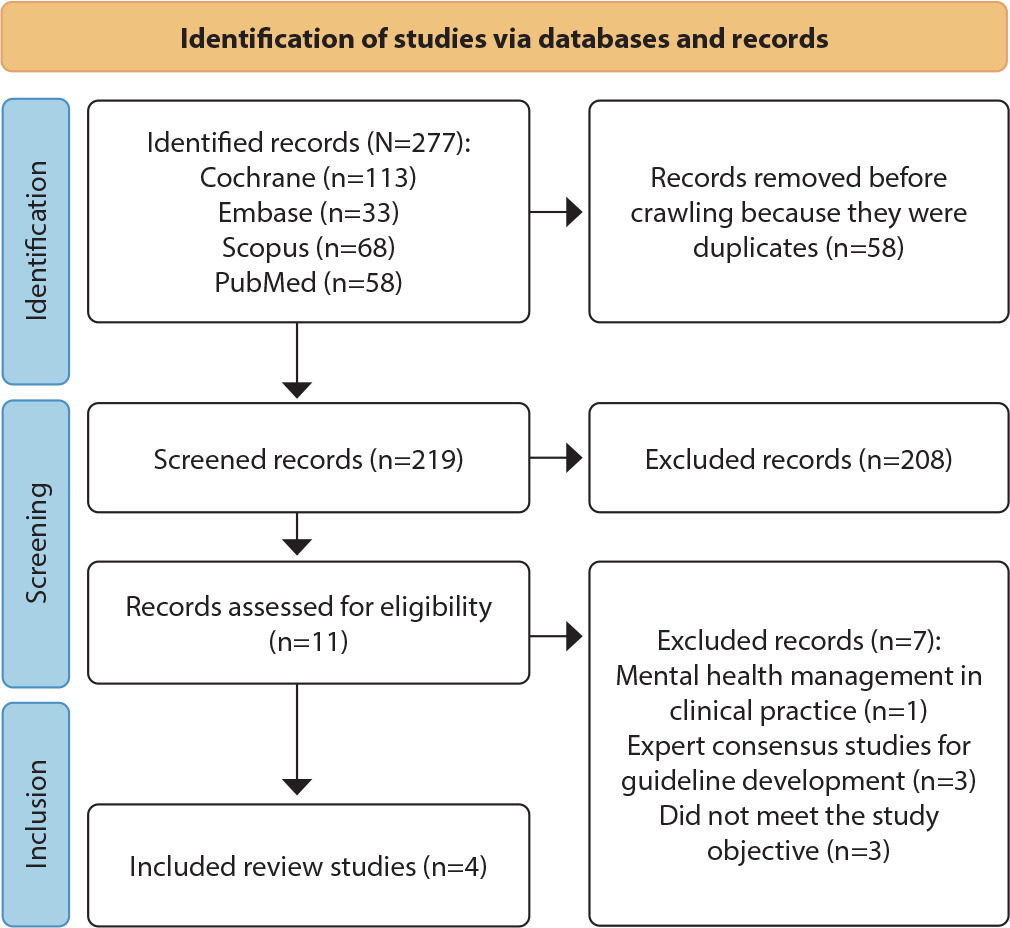
-
ARTÍCULO ORIGINAL
Depression among nursing students and its association with academic life
Revista Brasileira de Enfermagem. 2020;73(1):e20180173
10/02/2020
Resumo
ARTÍCULO ORIGINALDepression among nursing students and its association with academic life
Revista Brasileira de Enfermagem. 2020;73(1):e20180173
10/02/2020DOI 10.1590/0034-7167-2018-0173
Visualizações0Ver maisABSTRACT
Objective:
To measure the levels of depression among Nursing students from a public institution of higher education and the association with aspects of academic life.
Method:
Analytical and quantitative study with 203 students from a higher education institution that uses active methodologies. We used Beck’s Depression Inventory and the Likert type scale of academic factors.
Results:
We verified that 19.2% had moderate or severe levels of depression. Higher levels of depression were associated with female gender (p=0.003), working more than 40 hours per week (p=0.047), spending more than 90 minutes to reach academic activities (p=0.043) and with 12 academic factors specific to routines of the studied institution.
Conclusion:
The results contribute to managers’ and professors’ reflection and analysis concerning nursing students’ mental health, in addition to indicating in which aspects there is a need to provide greater support to these students.
-
ARTÍCULO ORIGINAL
Pacientes críticos com COVID-19: perfil sociodemográfico, clínico e associações entre variáveis e carga de trabalho
Revista Brasileira de Enfermagem. 2022;75:e20210119
07/03/2022
Resumo
ARTÍCULO ORIGINALPacientes críticos com COVID-19: perfil sociodemográfico, clínico e associações entre variáveis e carga de trabalho
Revista Brasileira de Enfermagem. 2022;75:e20210119
07/03/2022DOI 10.1590/0034-7167-2021-0119
Visualizações0RESUMO
Objetivo:
Identificar o perfil sociodemográfico e clínico de pacientes com COVID-19; mensurar carga de trabalho e realizar associações entre variáveis clínicas.
Métodos:
Estudo transversal, 150 pacientes adultos com COVID-19 em unidade de terapia intensiva (marçojunho/2020). Dados do prontuário eletrônico nas primeiras 24 horas de internação: sexo, idade, escolaridade, procedência, comorbidades, ventilação mecânica invasiva, manobra prona, terapia renal substitutiva, lesão por pressão, Braden, Nurging Activies Score, diagnósticos e cuidados de enfermagem. Análise estatística descritiva, associações entre variáveis clínicas e grupo etário.
Resultados:
Sexo masculino (55,3%); idade média, 59 anos; hipertensos (57,3%); obesos (50,6%); diabéticos (34%); ventilação mecânica invasiva (66,7%); pronados (20,6%); hemodiálise (15,3%); média do Nursing Activities Score, 86%. Encontraram-se 28 diagnósticos de enfermagem e 73 cuidados.
Conclusão:
Pacientes necessitaram de suporte de alta complexidade. Houve associação significante entre lesão por pressão e carga de trabalho com manobra prona. Os diagnósticos e cuidados de enfermagem refletem necessidades dos pacientes críticos.
Palavras-chave: Carga de TrabalhoDiagnóstico de EnfermagemInfecções por CoronavirusProcesso de EnfermagemUnidades de Terapia IntensivaVer mais -
ARTÍCULO DE REVISIÓN
Patient safety challenges in primary health care: a scoping review
Revista Brasileira de Enfermagem. 2020;73(5):e20190209
06/07/2020
Resumo
ARTÍCULO DE REVISIÓNPatient safety challenges in primary health care: a scoping review
Revista Brasileira de Enfermagem. 2020;73(5):e20190209
06/07/2020DOI 10.1590/0034-7167-2019-0209
Visualizações0Ver maisABSTRACT
Objectives:
to identify the patient safety challenges described by health professionals in Primary Health Care.
Methods:
a scoping review was conducted on the LILACS, MEDLINE, IBECS, BDENF, and CINAHL databases, and on the Cochrane, SciELO, Pubmed, and Web of Science libraries in January 2019. Original articles on patient safety in the context of Primary Health Care by health professionals were included.
Results:
the review included 26 studies published between 2002 and 2019. Four categories resulted from the analysis: challenges of health professionals, administration challenges of health services, challenges with the patient and family, and the potential enhancing resources for patient safety.
Conclusions:
patient safety challenges for Primary Care professionals are multiple and complex. This study provides insight into resources to improve patient safety for health care professionals, patients, administrators, policy makers, educators, and researchers.
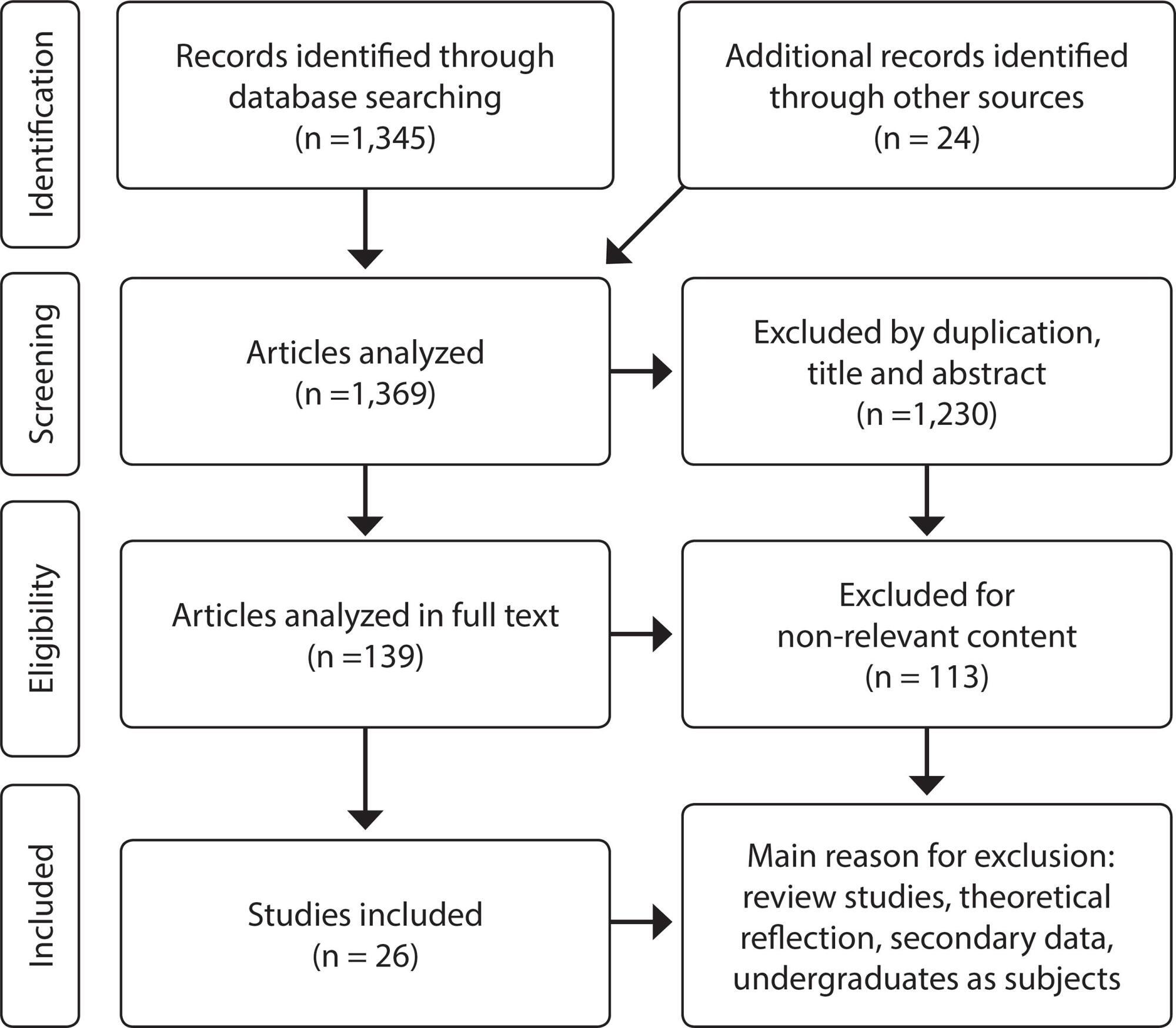
-
ARTÍCULO ORIGINAL
Fatores associados à síndrome da fragilidade em idosos rurais
Revista Brasileira de Enfermagem. 2019;72:14-21
05/12/2019
Resumo
ARTÍCULO ORIGINALFatores associados à síndrome da fragilidade em idosos rurais
Revista Brasileira de Enfermagem. 2019;72:14-21
05/12/2019DOI 10.1590/0034-7167-2017-0079
Visualizações0Ver maisRESUMO
Objetivo:
determinar a prevalência e os fatores associados à síndrome da fragilidade em idosos (SFI) da população rural de Pelotas.
Método:
estudo quantitativo, analítico e transversal realizado com 820 idosos cadastrados na Estratégia Saúde da Família (ESF) na zona rural do município de Pelotas, no período de julho a outubro de 2014.
Resultados:
entre os avaliados, 43,41% apresentaram SFI. Consolidaram-se como fatores associados à condição a baixa renda (RP: 1,54, p ≤ 0.001), a baixa escolaridade (RP: 1,45, p ≤ 0.001), o estado nutricional (obesidade) (RP: 1,89, p ≤ 0,001), a inatividade física (RP: 1,93, p = 0.003), a apresentação de déficit cognitivo (RP: 2,07, p = 0.005) e a autopercepção de saúde baixa (RP: 8,21, p ≤ 0,001).
Conclusão:
os achados podem contribuir efetivamente para o estabelecimento de medidas de prevenção e rastreamento da fragilidade entre as pessoas idosas por parte dos profissionais de saúde, principalmente dos enfermeiros, visando evitar a ocorrência da síndrome e dos desfechos adversos e indesejáveis.
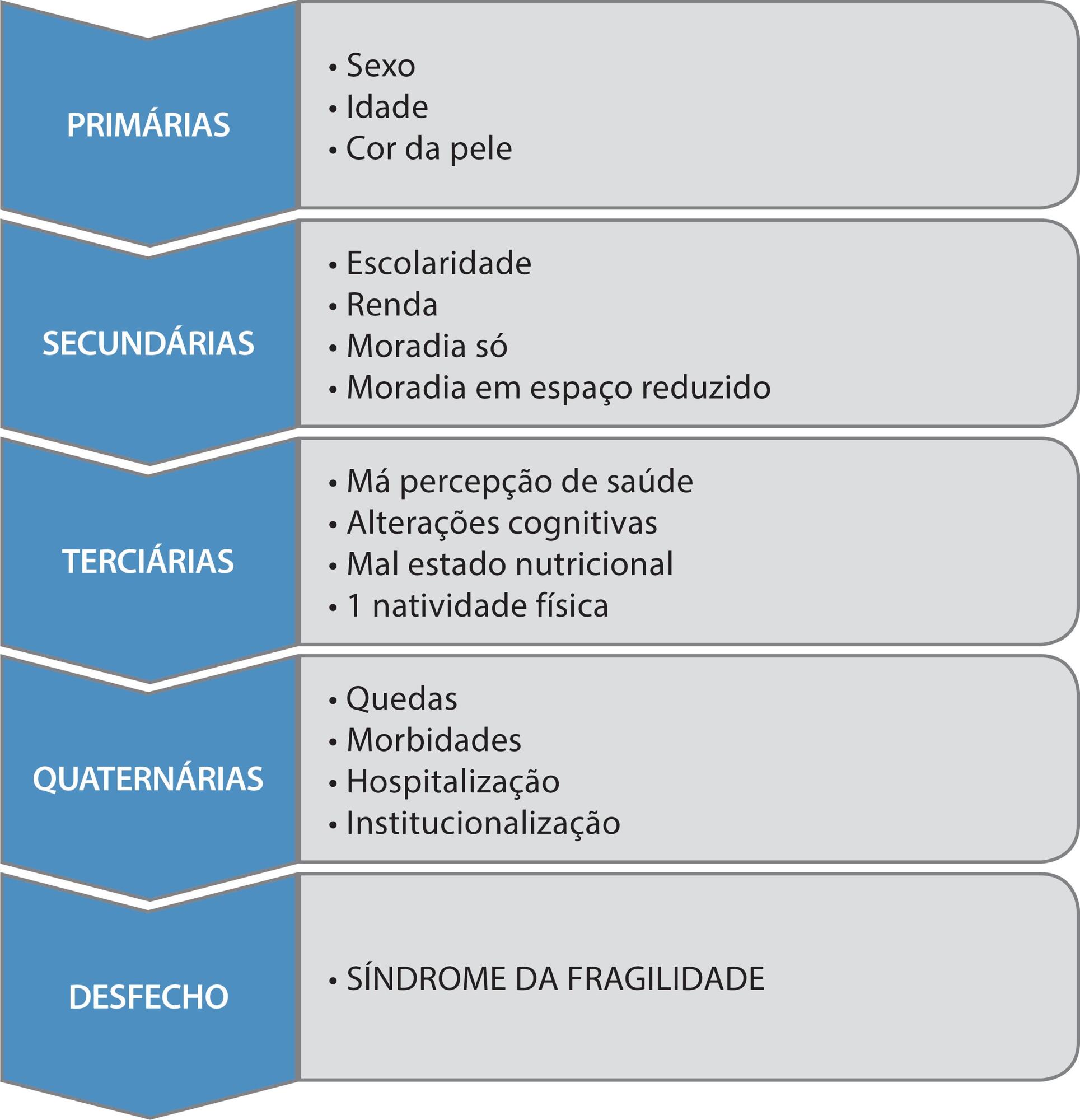
-
ARTÍCULO ORIGINAL
Eliot Freidson’s sociology of professions: an interpretation for Health and Nursing
Revista Brasileira de Enfermagem. 2020;73(6):e20180950
10/08/2020
Resumo
ARTÍCULO ORIGINALEliot Freidson’s sociology of professions: an interpretation for Health and Nursing
Revista Brasileira de Enfermagem. 2020;73(6):e20180950
10/08/2020DOI 10.1590/0034-7167-2018-0950
Visualizações0Ver maisABSTRACT
Objectives:
to analyze theoretical conceptions of Eliot Freidson’s Sociology of Professions scoped on health and nursing professions.
Methods:
Eight nurses were interviewed, all involved in the development of the professional Council on the timeframe from 1975 to 1986. Documental resources were Laws, Ordinances, Resolutions, Reports, Meeting Minutes and Public Deeds. Information was organized as from literature and Eliot Freidson’s conceptions, and thematic content analysis was carried out.
Results:
the concepts authored by Eliot Freidson allowed for the development of a concept chart that portrays the nursing profession and that may be expanded for the other occupations in the health field, in consonance with professional organization in the country.
Final Considerations:
Eliot Freidson’s framework, in interpretation for nursing, consolidates the profession with relative autonomy, expertise by Nursing Care Systematization and credentialism by professional normalizations.
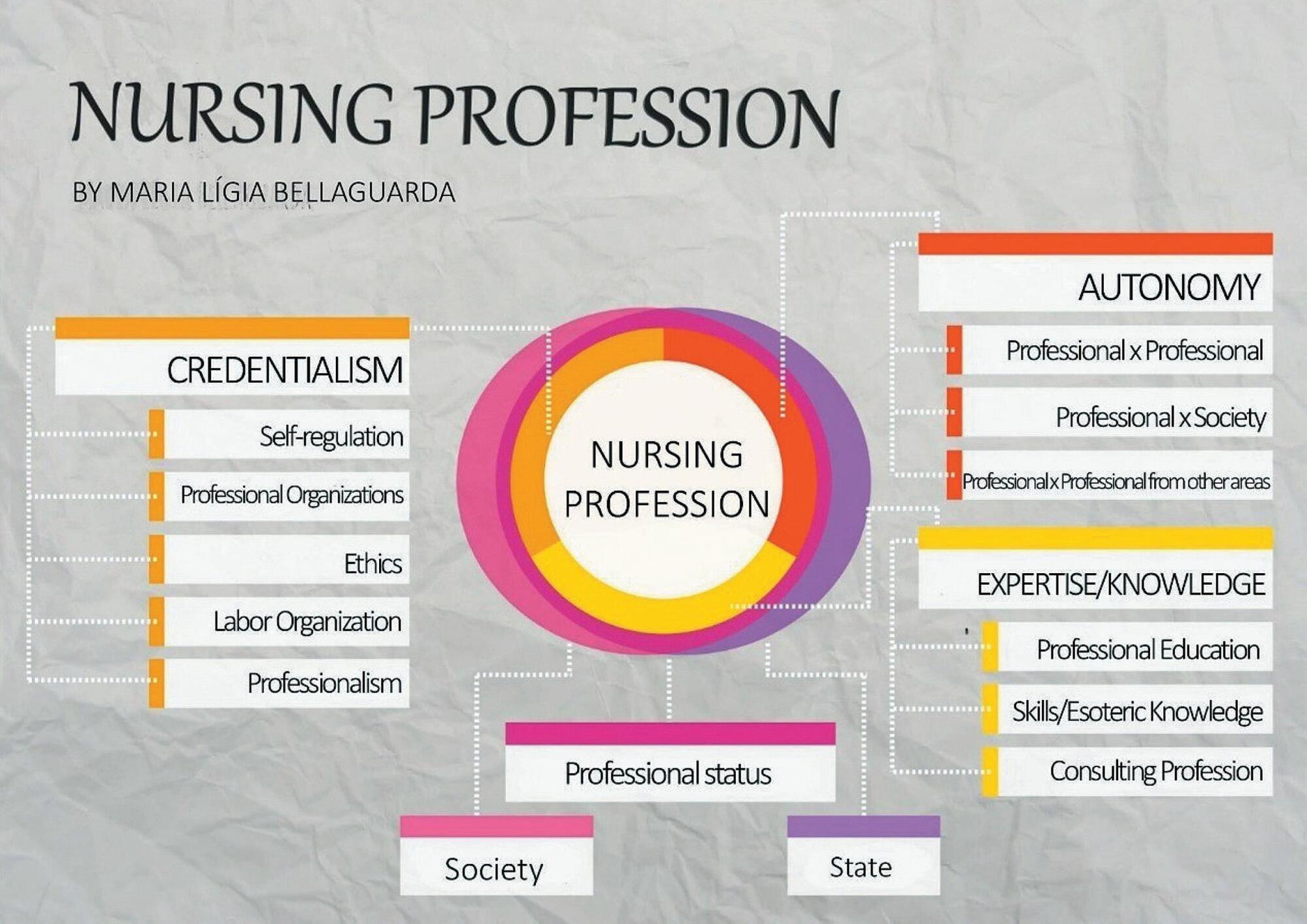
-
ARTÍCULO ORIGINAL
Associação entre conhecimento e adesão às práticas de autocuidado com os pés realizadas por diabéticos
Revista Brasileira de Enfermagem. 2020;73(5):e20190430
06/07/2020
Resumo
ARTÍCULO ORIGINALAssociação entre conhecimento e adesão às práticas de autocuidado com os pés realizadas por diabéticos
Revista Brasileira de Enfermagem. 2020;73(5):e20190430
06/07/2020DOI 10.1590/0034-7167-2019-0430
Visualizações0Ver maisRESUMO
Objetivos:
verificar a associação entre o conhecimento e a adesão às práticas de autocuidado com os pés realizadas por pacientes com diabetes mellitus tipo 2. Métodos: estudo transversal, descritivo, realizado com 197 pacientes em unidades básicas de saúde localizadas na região Nordeste do Brasil. Para a coleta de dados, foi utilizado um questionário semiestruturado que abordava questões inerentes ao conhecimento e às Atividades de Autocuidado com o Diabetes.
Resultados:
observou-se que os pacientes com conhecimento moderado sobre as práticas de autocuidado tiveram mais chances de realizar autoexame dos pés, secar os espaços interdigitais, hidratar os pés com cremes e óleos, observar a presença de micose e unha encravada, quando comparados aos pacientes com conhecimento insuficiente.
Conclusões:
o nível de conhecimento dos pacientes apresentou estreita relação com as atividades de autocuidado realizadas, o que reforça a importância de o enfermeiro atuar na capacitação daqueles sobre os cuidados essenciais com sua saúde.
-
ARTÍCULO ORIGINAL
Relação entre funcionalidade da família e qualidade de vida do idoso
Revista Brasileira de Enfermagem. 2022;75(2):e20210106
29/09/2022
Resumo
ARTÍCULO ORIGINALRelação entre funcionalidade da família e qualidade de vida do idoso
Revista Brasileira de Enfermagem. 2022;75(2):e20210106
29/09/2022DOI 10.1590/0034-7167-2021-0106
Visualizações0Ver maisRESUMO
Objetivo:
Analisar a correlação entre a funcionalidade familiar e qualidade de vida de idosos.
Método:
Estudo seccional e correlacional conduzido com 692 idosos brasileiros entre julho e outubro de 2020. Os idosos preencheram três instrumentos: biossociodemográfico, APGAR de família e WHOQOL-Old. Os dados foram analisados com os testes de Kruskal-Wallis, correlação de Pearson e regressão linear. Considerou-se um intervalo de confiança de 95% (p < 0,05) para todas as análises.
Resultados:
Os idosos com disfunção familiar leve e severa apresentaram pior qualidade de vida quando comparados com os idosos de família funcional. Todas as facetas da qualidade de vida se correlacionaram positivamente com a funcionalidade familiar.
Conclusão:
A funcionalidade familiar está correlacionada positivamente com a qualidade de vida dos idosos, necessitando, portanto, da inclusão da família nos planos de cuidados em saúde como forma de identificar precocemente potenciais estressores familiares e planejar intervenções para solução das problemáticas levantadas.
-
ARTÍCULO DE REVISIÓN
Psychosocial factors in nursing work and occupational risks: a systematic review
Revista Brasileira de Enfermagem. 2021;74:e20200198
20/01/2021
Resumo
ARTÍCULO DE REVISIÓNPsychosocial factors in nursing work and occupational risks: a systematic review
Revista Brasileira de Enfermagem. 2021;74:e20200198
20/01/2021DOI 10.1590/0034-7167-2020-0198
Visualizações0Ver maisABSTRACT
Objective:
to identify, in international scientific production, the main psychosocial factors in nursing work, found through the Copenhagen Psychosocial Questionnaire (COPSOQ) application.
Methods:
a systematic review study of psychosocial factors at work among nursing professionals, who used COPSOQ in the assessment of work environments.
Results:
fifteen articles were identified, which highlighted as main psychosocial dimensions of nursing work demands, work organization, social relationships and leadership, work-home interface, workplace health and well-being and offensive behaviors.
Conclusion:
the high demands for cognitive, emotional work and work pace were identified in the nursing routine. Management support had a positive impact. Physical and psychological violence and shift work interfere in family life, aggravating the fatigue of these professionals. Interventions for reducing work stress presuppose the identification of psychosocial factors involved in nursing work.
Búsqueda
Buscar en:
Nuvem de Tags
Adolescente (85) Atenção Primária à Saúde (239) COVID-19 (91) Criança (91) Cuidados de Enfermagem (269) Educação em Enfermagem (151) Educação em Saúde (139) Enfermagem (930) Enfermagem Pediátrica (86) Estudantes de Enfermagem (77) Estudos de Validação (131) Família (87) Idoso (208) Promoção da Saúde (99) Qualidade de Vida (104) Saúde do Trabalhador (86) Saúde Mental (145) Saúde Pública (82) Segurança do Paciente (150) Tecnologia Educacional (100)



